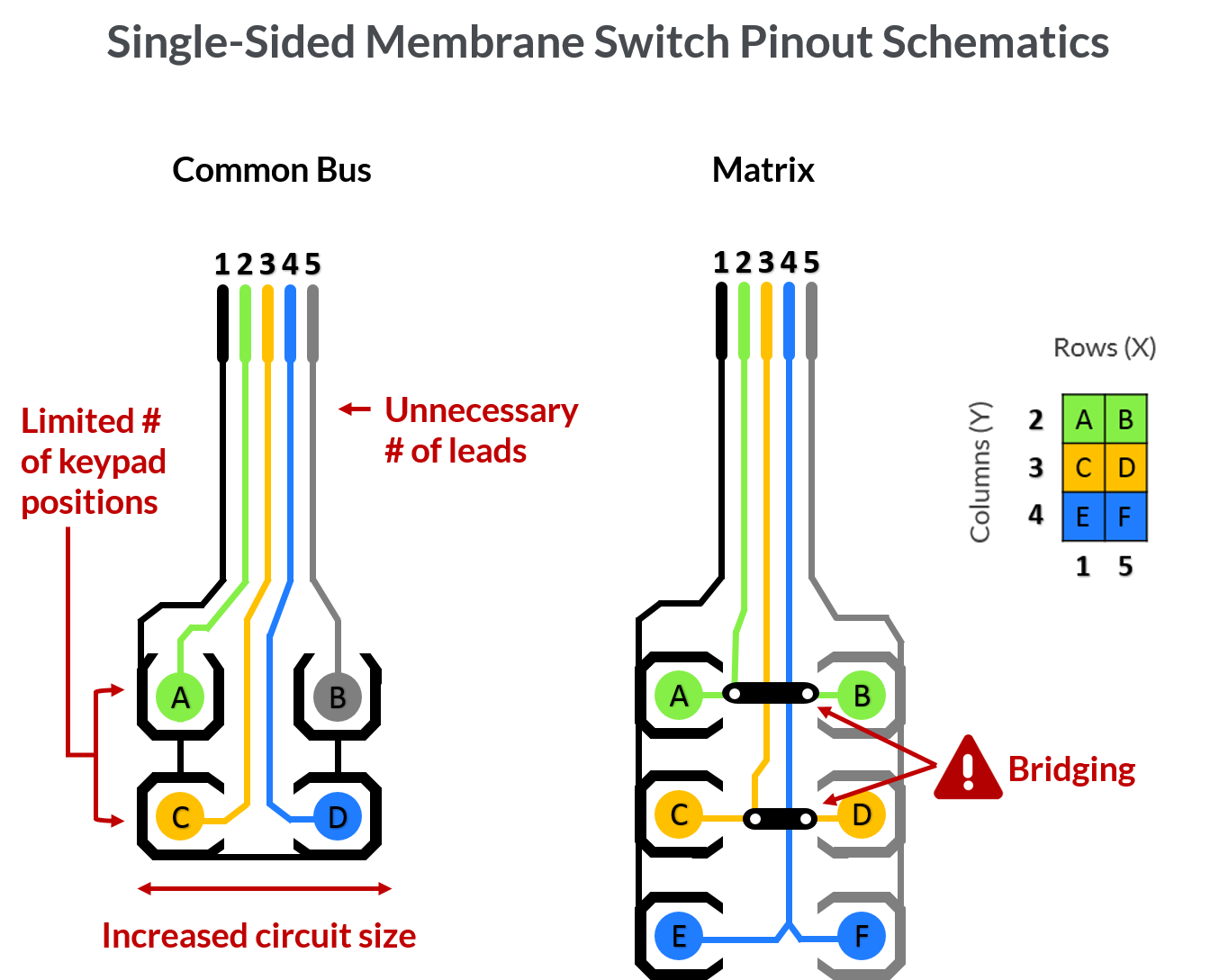Understanding the Performance of Membrane Switches Over for Interface Instruments
The performance of membrane layer switches represents a substantial development in user interface design, combining efficiency with visual versatility. As industries significantly prioritize individual experience, recognizing the nuances of membrane switch technology ends up being necessary.
What Are Membrane Switches?
Membrane buttons are cutting-edge user interface gadgets that assist in user interaction with electronic devices. These flexible elements contain numerous layers, consisting of a graphic overlay, spacer, and a published circuit layer. The style permits a smooth integration right into numerous electronic tools, boosting both the aesthetic and functional aspects of user interfaces.
Membrane layer switches are generally utilized in a large range of applications, from household home appliances to industrial machinery and medical devices. Their building commonly includes a thin account, making them an ideal selection for compact layouts. The responsive comments given by these buttons can be crafted to satisfy particular individual choices, ensuring efficient communication between the individual and the gadget.
Toughness is another substantial benefit of membrane switches, as they are immune to dust, wetness, and chemicals, which boosts their lifespan popular settings. Additionally, these buttons can be tailored in regards to form, dimension, and visuals style, enabling for branding and user-specific features. Overall, membrane layer switches over represent a useful remedy for improving customer experience in digital devices, integrating performance with aesthetic charm in a reliable fashion.
Exactly How Membrane Switches Over Work
Operating on a straightforward concept, membrane switches over make use of a layered building to register individual input properly. Each switch contains multiple layers, consisting of a published circuit layer, a spacer layer, and a leading graphic layer, which are designed to interact effortlessly. When a user presses the leading layer, it presses the spacer layer, bringing the conductive elements of the circuit layer into contact with each various other.
This contact creates a shut circuit, signaling the device to carry out a specific function. The layout permits various setups, including tactile comments, which can improve the user experience by giving a physical feeling upon activation. The products utilized in membrane switches commonly consist of flexible substrates, such as polyester or polycarbonate, which make certain toughness and resilience against wear and tear.

Trick Benefits of Membrane Layer Buttons

One more considerable benefit is their compactness. Membrane buttons are slim and lightweight, which enables manufacturers to save room in their tools without giving up capability. This attribute is particularly useful in applications where weight and quantity are essential factors to consider.
Additionally, membrane switches are immune to dirt, moisture, and chemicals, enhancing their sturdiness. This resilience extends their life expectancy and reduces the demand for regular substitutes, causing cost savings gradually.
Moreover, the responsive comments provided by membrane layer switches can be optimized to enhance customer communication. They can include functions such as raised buttons or distinct clicks, boosting functionality and customer experience.
Applications Across Industries
Interface tools utilizing membrane layer switches are common in a broad range of industries, showcasing their versatility and performance. Membrane Switch. In the medical field, membrane layer switches are integral to devices such as analysis equipment and client surveillance systems, where their durability and simplicity of cleansing are critical for maintaining hygiene standards. In the automotive market, these buttons are used in dashboard controls and infotainment systems, supplying a sleek and modern-day interface for customers.
In addition, the consumer electronics field take visit here advantage of membrane buttons in appliances and handheld devices, where portable style and user-friendly user interfaces boost user experience. Industrial applications additionally utilize membrane layer switches over for control board in equipment and automation systems, emphasizing their toughness and resistance to rough settings.
In the aerospace and defense industries, membrane layer buttons are utilized in cabin controls and devices, where dependability and efficiency under severe conditions are critical. Additionally, the gaming sector click to find out more significantly integrates membrane switches in controllers and arcade makers, contributing to an appealing customer experience. Overall, the convenience of membrane layer switches allows their extensive usage throughout various markets, underscoring their importance in modern-day customer interface layout.
Future Fads in Membrane Layer Switch Modern Technology

Furthermore, making use of sophisticated materials, such as polycarbonate and polyester films, is expected to climb, giving enhanced toughness and resistance to environmental stress factors. These materials add to the total longevity of membrane switches, making them suitable for harsher commercial applications.
Furthermore, the incorporation of wise modern technology, consisting of IoT connectivity, will certainly official statement allow membrane buttons to interact with various other gadgets and systems, facilitating a more interactive customer experience. This fad aligns with the growing demand for smart tools throughout various sectors, from medical care to consumer electronic devices.
Lastly, modification alternatives are expected to expand, allowing manufacturers to produce bespoke solutions tailored to certain customer needs and preferences. These advancements will certainly position membrane layer switches as necessary components in the development of interface technology.
Conclusion
Finally, membrane layer changes represent an essential development in interface innovation, providing a dependable and versatile service for diverse electronic applications. Their layered construction facilitates portable style, while features such as tactile feedback boost user communication. The resilience against ecological variables better strengthens their energy throughout multiple markets. As advancements in product science and touch sensing technologies proceed, the capability and applicability of membrane switches are expected to increase, reinforcing their relevance in contemporary digital devices.